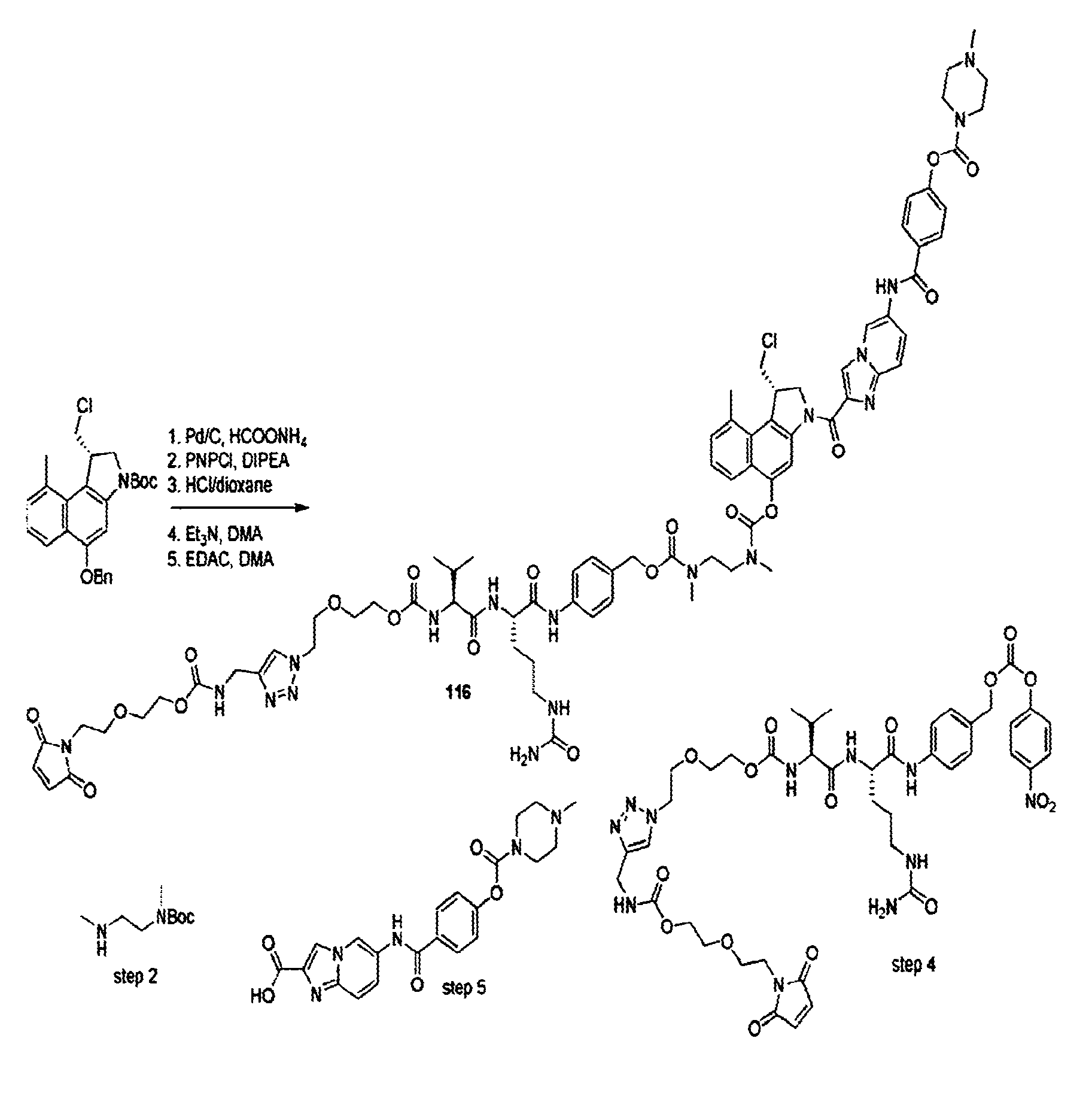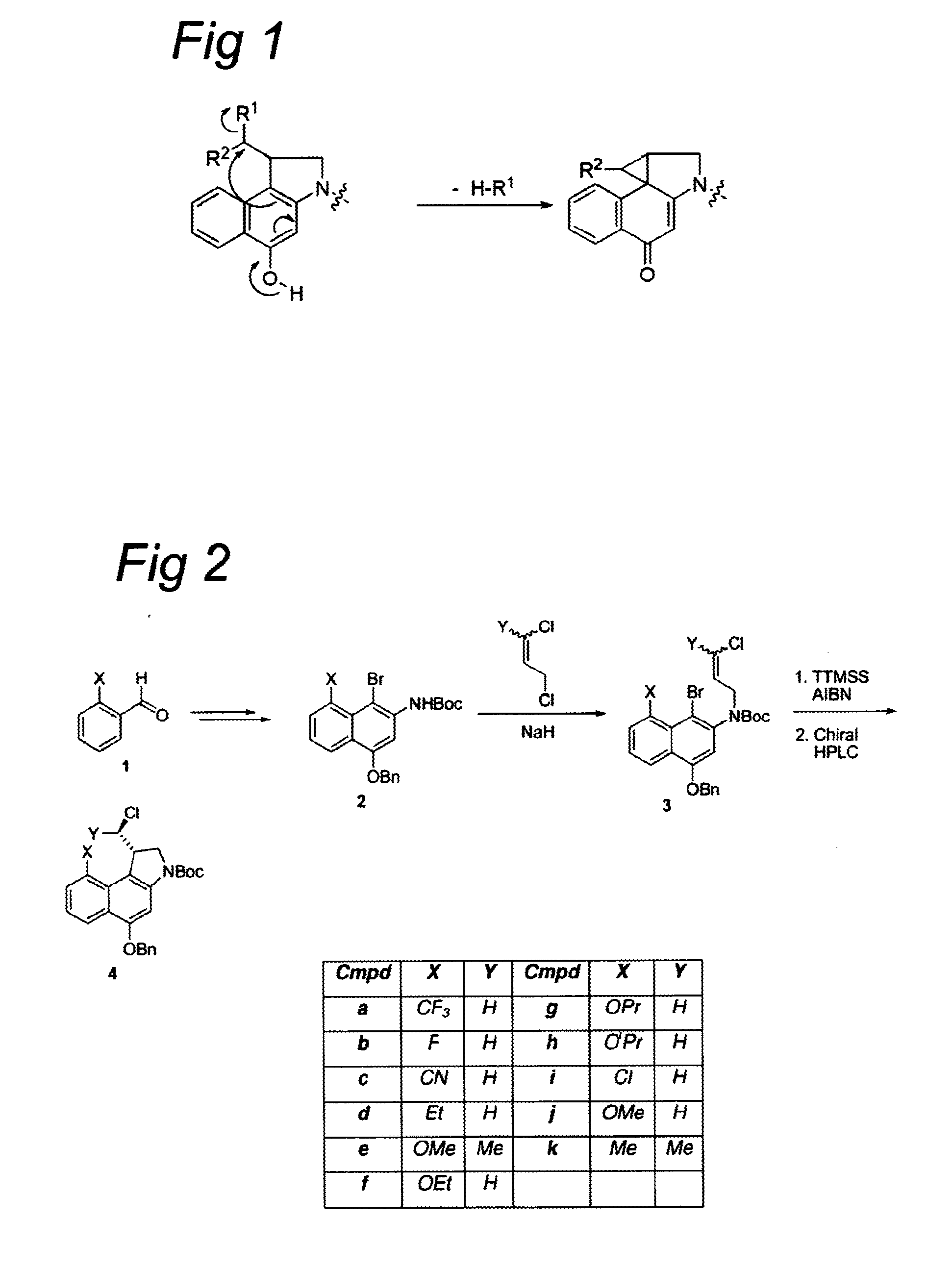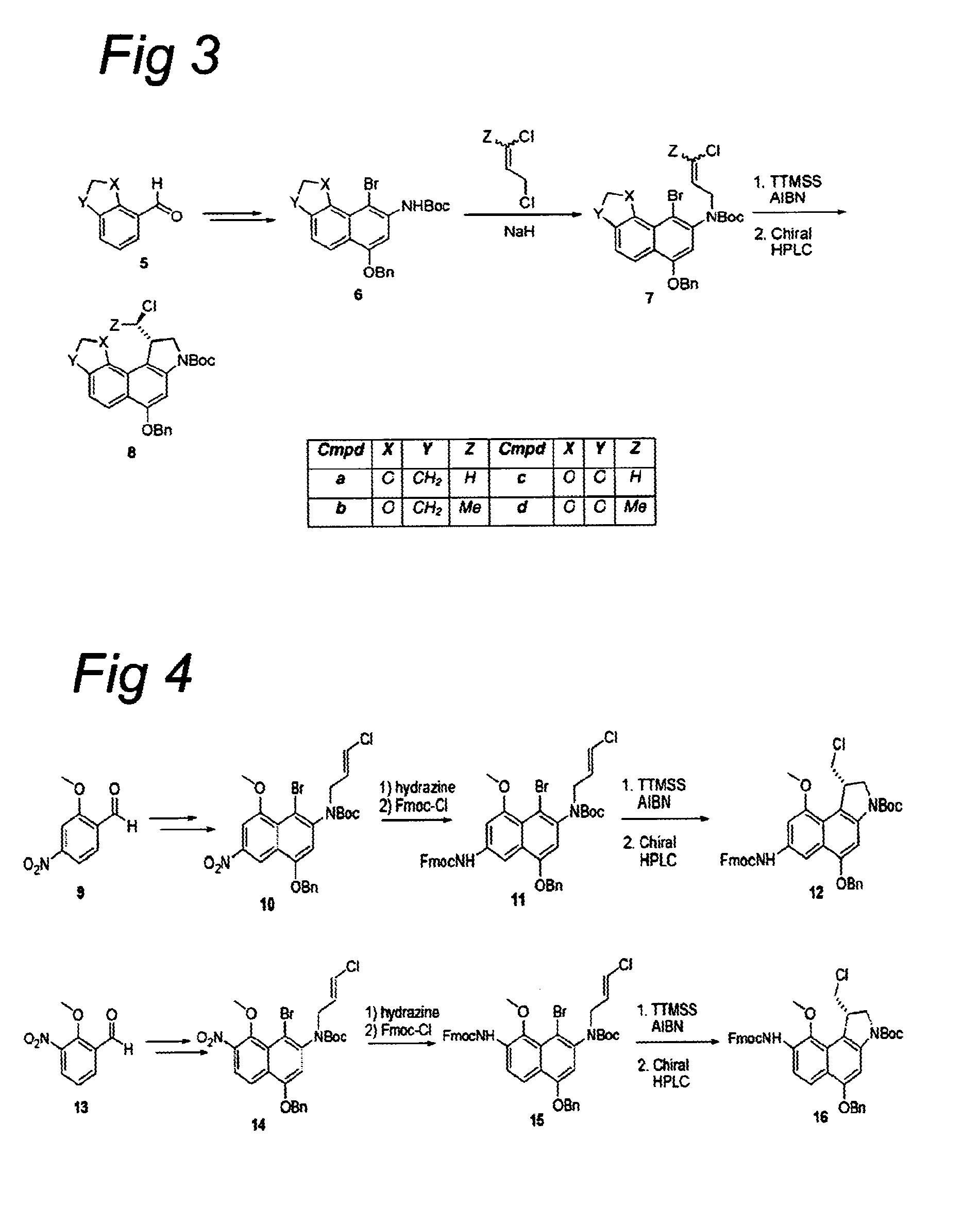Novel cc-1065 Analogs and Their Conjugates
a technology of dnaalkylating agent and analog, applied in the field of new cc-1065 analogs and their conjugates, can solve the problems of severe side effects, affecting healthy cells with relatively high proliferation rate, and derivatives lacking sufficient selectivity for tumor cells, etc., to improve pharmacological properties and cytotoxic activity, improve binding affinity, and improve the effect of cytotoxic activity
- Summary
- Abstract
- Description
- Claims
- Application Information
AI Technical Summary
Benefits of technology
Problems solved by technology
Method used
Image
Examples
example 1
General Procedure for the Alkylation of Compounds 2 and 6
[0549]To a suspension of NaH (2.5 equiv.) in DMF was added a solution of bromonaphthalene 2 or 6 in DMF and the resultant mixture was stirred for 1 h at room temperature. Alkene (1.6 equiv.) was added and the mixture was stirred for another 2 h at room temperature. The reaction was slowly quenched with saturated aqueous NH4Cl and the resultant mixture was extracted with EtOAc. The organic layer was washed with water and brine, dried (Na2SO4), filtered, and concentrated. The crude product was purified using column chromatography to afford the alkylated naphthalene 3 or 7.
General Procedure for the Radical Ring Closure of Compounds 3, 7, 11, and 15
[0550]A solution of naphthalene 3, 7, 11, or 15 in toluene was brought under a nitrogen atmosphere by bubbling nitrogen through the solution for 10 minutes, AIBN (0.25 equiv.) and TTMSS (1.1 equiv.) were added, and the mixture was stirred at 80° C. for 4 h. The reaction mixture was cool...
example 2
[0569]
General Procedure for Amine Deprotection, Coupling, and Debenzylation
[0570]The N-Boc-O-Bn-protected seco CBI derivative was dissolved in 4 M HCl / dioxane and stirred at ambient temperature until TLC indicated completion of the reaction. The reaction mixture was concentrated in vacuo and further dried under high vacuum. The residue was dissolved in dry DMF, the solution was cooled to 0° C., and EDC (2.0 equiv.) and functionalized, optionally Boc-protected indole-2-carboxylate (1.5 equiv) were added. The reaction mixture was allowed to warm to ambient temperature overnight, after which it was concentrated in vacuo. The residue was taken up in water / EtOAc, saturated aqueous NaHCO3 was added, and the mixture was extracted with EtOAc. The combined organic layers were washed with brine, dried (Na2SO4), filtered, and concentrated in vacuo. Flash chromatography afforded the benzyl-protected agent. This compound was dissolved in methanol, and Pd / C (10% Pd, 0.2 equiv.) and HCOONH4 (10 eq...
example 3
[0576]
[0577]Compound 30: 1H NMR (400 MHz, DMSO-d6), δ (ppm): 2.76 (3H, s, 9-Me), 3.50 (1H, m, H-10), 3.78 (1H, d, J=10.8 Hz, H-10), 4.00-4.10 (4H, m, H-1, NCH), 4.13-4.20 (1H, m, H-2), 4.33-4.39 (1H, m, H-2), 7.19-7.28 (3H, m, H7, Ph-H), 7.33 (1H, d, J=7.0 Hz, H-8), 7.45 (1H, s, H-3′), 7.58-7.75 (3H, m, H-4, H6′, H7′), 7.85 (2H, d, J=8.6 Hz, Ph-H), 8.02 (1H, d, J=8.0 Hz, H-6), 8.06 (1H, s, H-4′), 9.45 (2H, bs, NH2), 10.38 (1H, s, OH), 10.52 (1H, s, NH); MS (ESI) m / z=539 [M+H]+.
PUM
| Property | Measurement | Unit |
|---|---|---|
| Volume | aaaaa | aaaaa |
| Electric potential / voltage | aaaaa | aaaaa |
| Molar density | aaaaa | aaaaa |
Abstract
Description
Claims
Application Information
 Login to View More
Login to View More - R&D
- Intellectual Property
- Life Sciences
- Materials
- Tech Scout
- Unparalleled Data Quality
- Higher Quality Content
- 60% Fewer Hallucinations
Browse by: Latest US Patents, China's latest patents, Technical Efficacy Thesaurus, Application Domain, Technology Topic, Popular Technical Reports.
© 2025 PatSnap. All rights reserved.Legal|Privacy policy|Modern Slavery Act Transparency Statement|Sitemap|About US| Contact US: help@patsnap.com



